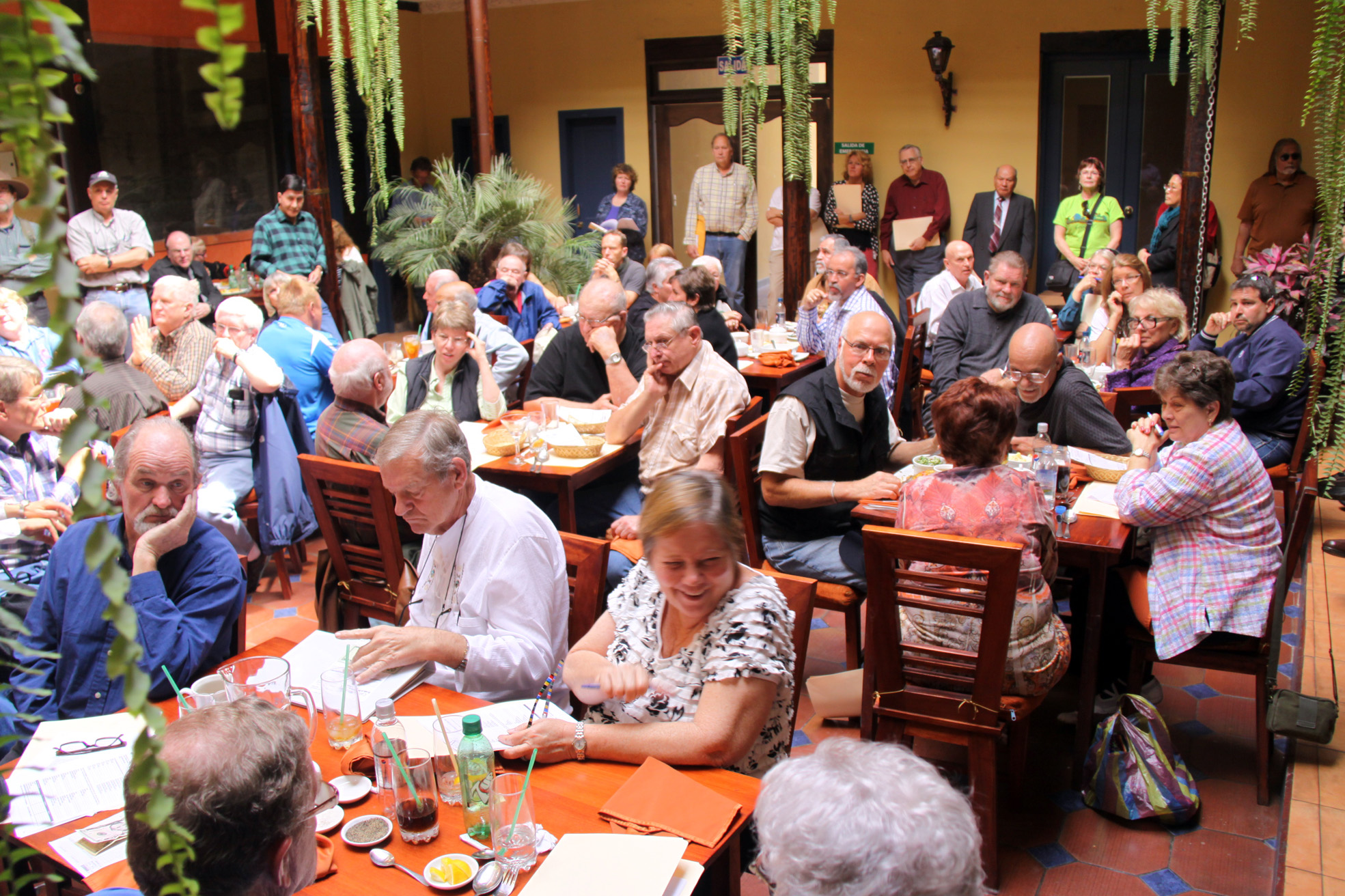Cuenca expat scene is ‘changing before our eyes’ as more young families and Europeans move in
By Sylvan Hardy
Cuenca’s expatriate community is changing before our eyes, growing in size and becoming more multicultural.

A young expat family on the banks of the Tomebamba River.
That’s the assessment of University of Edinburgh researcher Calvin Evans, currently in town conducting interviews.
“The changes are happening fairly rapidly due to the influx of Europeans, digital nomads and young families,” says Evans, who is working with faculty members at the University of Cuenca on his project. “This is a very dynamic situation and is a fascinating subject for research,” he says.
“As in many other expat communities, there has been a surge of newcomers to Cuenca since the end of the Covid pandemic,” he adds.
According to Evans, the focus of attention for many years has been on North America retirees moving to Cuenca. “This is still the largest expat group with about 6,000 to 7,000 by most estimates,” he says. “The arrival of this group has been widely reported by the international media for several years. What hasn’t received much notice is the more recent phenomenon of Europeans, Asians and younger people and people from countries other than the U.S. and Canada moving in.”
He adds that Cuenca has the largest community of native English-speaking residents in South America.
In total, there are 11,000 to 12,000 legal residents in Cuenca from North America and Europe, with a few hundred more from Asia and Africa. The largest contributors to the growth by country are the U.S. and Canada, Great Britain, Australia, Spain, Ireland, France, Germany, the Netherlands and Scandinavian countries. Other nationalities represented in significant numbers are China, Czech Republic, Taiwan, Ukraine, and India.
“The city foreign affairs office put the number at 14,000 but I believe this is a little high,” Evans says.
Cuenca is also a magnet for expats from other Latin American countries, particularly Venezuela, Colombia, Peru, Argentina and Cuba. “The best estimates are that there are 20,000 migrants from Venezuela and 10,000 from Colombia in Cuenca, many of them escaping poverty and violence back home,” says Evans. “About half of the Venezuelans have legal status or are pursuing it while most of the Colombians are legal residents.”

North Americans, mostly retirees, have been the big expat story in Cuenca for several years but that may be changing.
“When I started my interviews, I was focusing on the North Americans, who were mostly middle aged and elderly,” Evans says. “Then I began noticing all the other nationalities represented here and came to understand that this is probably the future trend. The gringos may not be the biggest story among migrants for much longer.”
Evans believes that that there are between 1,500 and 2,000 younger expats in Cuenca, most of them arriving since 2019, mostly from the U.S. and Europe. “Many of them have children and local schools tell me that the number of expat children they enroll is growing,” he says.
Evans says that the expat groups from France and Germany are the fastest growing, with about 700 and 800 respectively.
He says his studies of North American expats show rapid turnover. “Many in this group return home, mostly because of family considerations, bad health and poor preparation for expat life. On the other hand, there seems to be more North Americans moving in than leaving, especially since pandemic restrictions were removed.”
Evans says the average stay for expats in Cuenca is consistent with that of expats in other expat destinations, including Mexico, Panama, Portugal, Costa Rica and Spain. “Several studies show that expats stay in their first landing spot for two to two-and-a-half years and foreigners living here seem to fit this profile.”
Evans adds: “One issue that interests me is the growing multiculturalism of Cuenca. With almost 50,000 foreigners living here, Cuenca may be the most culturally diverse place in Latin America.”




















